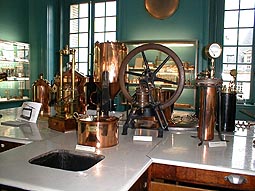| | | | | When a complete microorganism (dead or live) or some of its proteins are capable of inducing a protective and long-lasting immune response against a virulent microorganism without producing secondary effects, it is defined as a vaccine.
| | |
The immune system can protect itself against a certain microorganism, so that if the same microorganism appears in virulent form at any time, it is quickly recognised and can be effectively combated.
|
This preventive preparation is based on the immune system memory which achieves an adaptive response, both humoral and cell. This is known as active immunization or vaccination. Another means of inducing immunity, albeit short-lasting, in an animal at a given moment and for curative rather than preventive purposes is passive immunization or serotherapy. Serotherapy consists of transferring specific immunoglobulins against a particular antigen from one animal to another (generally of the same species to prevent adverse rejection reactions). These antibodies are produced in the donor animal after an active response produced by different vaccinations or antigenic stimulations.
Serotherapy is no longer used in porcine species, although it is of great use in other species such as the treatment of distemper in dogs, panleucopenia in cats and tetanus in horses. In serotherapy, a humoral response is immediately transferred to the animal receptor, based exclusively on antibodies (main biological functions of immunoglobulins). This response is not very long-lasting due to catabolism of immunoglobulins. The discovery of monoclonal antibodies gave rise to great hopes for the use of serotherapy against even some types of tumours. Nevertheless, its use has been limited to dealing with immunological rejection as it has only been able to produce hybridomas in mice up to now. |
|
|
| The adaptive immune response is a SPECIFIC response induced by a specific antigen that generates a response for that antigen. It is triggered after the natural response has failed and its first actions start to be seen between 96 and 120 hours post infection. The foreign agents or antigens, which are not removed during the natural response are transported by the macrophages from the entry point to the secondary lymphoid organs (lymph nodes) where the presenting cells start their processing of the antigen to start presentation to T CD 4+ lymphocytes (How are the B lymphocytes stimulated?) An infectious agent (complete or fragmented, live or dead) capable of causing a relatively long-lasting immune response without producing any kind of lesion is considered to be a vaccine. |


Photos of the Louis Pasteur Laboratory-Museum, Paris. |
About one hundred years after the first vaccine, Louis Pasteur (1822-1895) demonstrated that relatively long-lasting immunity could be induced using homologous microorganisms (Jenner used heterologous microorganisms, using bovine virus to prevent disease in humans) modified both in their virulence and their total inactivation. Therefore two types of vaccine were created: inactivated vaccines, tested by Pasteur on anthrax, and live attenuated vaccines, produced for the first time by the same scientist in 1885 against the rabies virus. Although Pasteur did not discover immune activation mechanisms nor induction of immune memory, his vaccine design has retained great importance up to the present day. These vaccines, nowadays known as conventional vaccines, have been very successful in controlling and fighting many diseases in animals and humans. These range from smallpox (the initiator of these studies) to rabies, and also include serious swine diseases such as foot-and-mouth or classical swine fever.
The immune mechanism of vaccination was finally understood in 1957 by Frank Burnet (1899-1985) one hundred years after Pasteur. He proposed the theory of clonal selection and subsequently discovered the role of the T and B lymphocytes in 1965. Stimulation of the antigens which make up a vaccine induces a primary response with stimulation or clonal expansion of T and B memory lymphocytes (memory cells) able to induce a secondary response if the same antigens re-enter the organism.
|
|
From a technological point of view, the different vaccines currently available can be divided into two major groups:
| a) Conventional: |
|
Live attenuated
Inactivated (dead) |
| b) New generation: |
|
Subunits
Synthetic peptides
Recombinants
DNA vaccines |
|
How many types of vaccine exist?
A different group of vaccines known as new generation vaccines has become available thanks to advances in our knowledge of the immune response and antigen-presenting mechanisms, alongside the progress made in techniques of molecular biology, identification of proteins of immunological interest and the availability of different vectors for the expression of these proteins. Some of these vaccines permit the vaccinated animal to be distinguished from a sick animal. Nevertheless, most vaccines currently in use against many bacterial and viral diseases are still from the group of conventional vaccines. |
|
Throughout this chapter and the next we will review each type of vaccine, highlighting their advantages and disadvantages. |
|
| |

